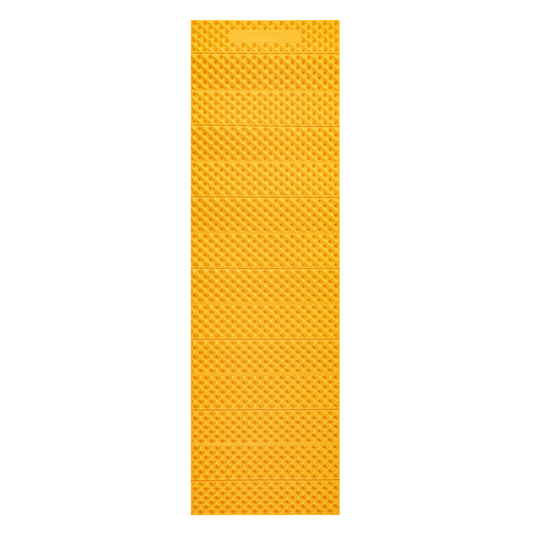
Source: Wikimedia
Hydration bladders are an essential part of any hiker's gear, whether it be a small one for day-hikes or a full-sized one for several-day long backpacking adventures. At first, it may be easy to overlook care of this hiking item, worried more about keeping your tent and sleep system in tip-top shape. However, it's important to know how to maintain your hydration bladder to prolong its life and keep it usable and safe for you to use. In this article, we'll cover what a hydration bladder is, why it's necessary to clean it properly, and the essentials on keeping it clean so you get the most use out of it.
What is a Hydration Bladder?
A hydration bladder is a reservoir made of rubber or plastic that contains a screw top lid for filling up and a hose that leads from the bladder and ends with a mouthpiece to allow for hands-free drinking on the trail. Hydration bladders generally come in 1, 2, and 3 liter volumes. Some companies do offer larger ones, but those are usually only used for backpacking trails that have an extreme shortage of water sources.
Many quality hiking backpacks have a specified area for your hydration bladder to sit within your bag, which is generally closest to your back to help with proper weight distribution and to give you easy access to the mouthpiece on the outside. Some smaller packs are specifically made to hold hydration bladders, such as for day-hikes and biking, with a few extra pockets for essentials, such as keys and wallets.
Why is It So Important to Clean It?
As you can imagine, all kinds of gross stuff can start growing inside of your hydration bladder if it's not cleaned regularly and properly. While you will likely be filtering water before it goes into your hydration bladder, trace amounts of bacteria, fungi, etc can be left behind both from the water itself and from backwash, which is why it's so important to clean your hydration bladder after any backpacking trip, no matter how clean the water was. It's best to clean your bladder after each use. Storing it properly after cleaning is just as important to prevent mold and mildew from growing. Read on to learn how to clean and store your hydration bladder as well as a few tips to make it easier.
How Do You Clean a Hydration Bladder?
Cleaning a hydration bladder is fairly simple. It's just a matter of making time to do it. You don't even need any special products, more than likely already having all you need to do the job laying around the house. Below is a list of supplies you will need as well as some optional items.
Supplies:
- Dish soap
- Cleaning brush-Bottle brushes (found in the baby section at most grocery and department stores) and dish washing brushes work well.
- Drying apparatus-This can be anything from a whisk to stick inside of the reservoir to keep it open and propped up while drying in a rack to a reservoir hanger made specifically for drying and storing your hydration bladder. Clothespins and a clothes hanger work just as well.
- Bleach-Use a few drops for some added disinfectant power or when your bladder could use a deeper clean.
- Lemon juice (optional)-Takes care of funky smells.
- Baking soda-Add a couple of teaspoons for some extra cleaning power.
- Reservoir cleaning tablets-You can use these each cleaning to simplify things as you just pop one in your reservoir with warm water and don't have to measure anything. You can also reserve these for when a deeper clean is in order to remove built-up deposits.
- Denture-cleaning tablets-These serve the same purpose as reservoir-cleaning tablets, but tend to be less expensive.
Process:
- Gather your supplies.
- Fill your hydration bladder with warm water. Add your cleaning solution, such as reservoir-cleaning tablet or bleach, lemon juice, or baking soda etc. Replace the cap on your bladder and give it a good shake.
- Holding your reservoir up with the tube end handing down, squeeze your mouthpiece until water starts running out to ensure the inside of the tube and mouthpiece are getting clean as well. Set your hydration bladder aside to soak for 5-20 minutes according to which cleaning solution you are using. Shorter for store-bought tablets and longer for household supplies. Once time is up, empty your reservoir. You can give it an extra rinse too, if you like.
- Fill it with warm water again with dish soap. Using your brush, make sure to scrub the entire thing, including the corners, as best as you can. You might also wish to remove the mouthpiece, if possible, for extra cleaning. It's also a good idea to scrub the inside of the tube. Pipe cleaners work well for this. Once you feel you've given it a good scrubbing, drain everything once again and rinse it out until no soap bubbles are left.
- Hang your bladder upside down, hang your tube, and set your mouthpiece aside to dry. Again, you can place a large whisk inside of the bladder to prop it up, hang it upside down from a clothes hanger, or use a reservoir hanger.
Tips:
- If not dried properly, mold and mildew can form inside of your hydration bladder, something you definitely don't want in your drinking water! If you can, try to get some of the excess moisture with a towel before hanging up to dry after cleaning.
- Don't hang it up in a dark, damp area. This can provide a breeding ground for yucky bacteria.
- You don't need to do a deep clean each time. Most of the time some warm water and dish soap will suffice, but be sure to use a reservoir-cleaning tablet or bleach after a few uses to make sure everything inside is disinfected properly.

Source: Wikimedia



